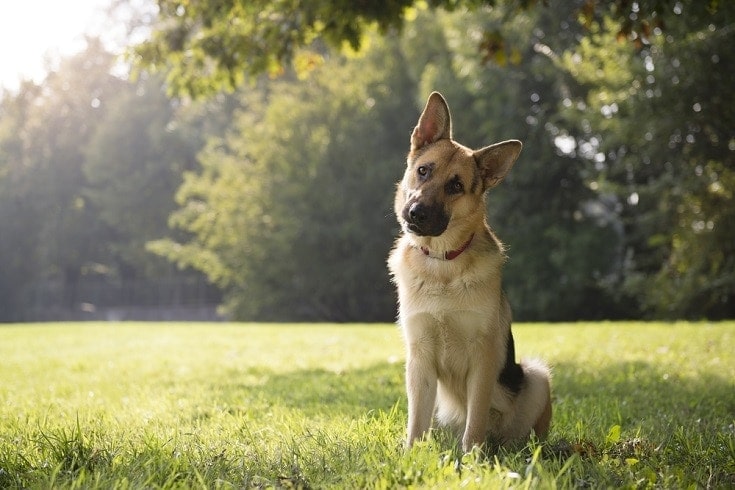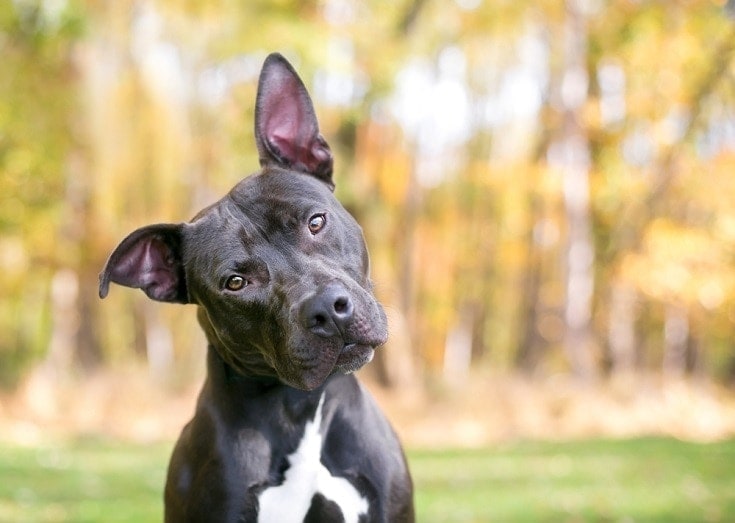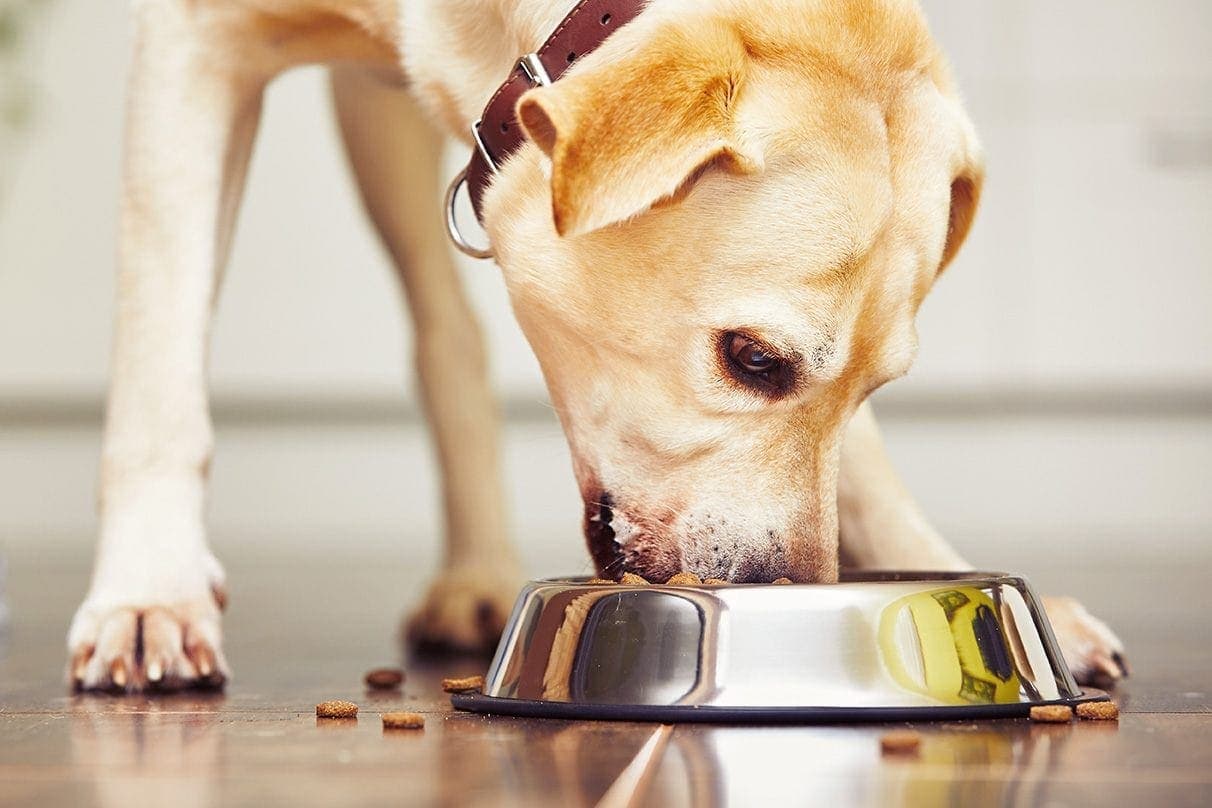Why Do Dogs Tilt Their Head? 5 Likely Reasons

Updated on

You talk to your dog. We all talk to our dogs. When he responds with a bark or head tilt, we love it! We encourage it because it’s so darn cute! Seriously. How can you resist a pup that cocks his head in response to your question about whether he wants a treat or a walk? Duh! But what does it mean when a dog tilts its head?
Part of the explanation about why your pup responds like he does rests with behavior and biology. Many dogs are eager to please because selective breeding has influenced these responses. For example, herding dogs nip and bark at livestock to keep them in line. Terriers have a keen prey drive and alertness to do their job well. When you coo and laugh at this behavior, you’re egging your pup on to do it again and again.
However, there are also some innate responses going on that cause your pup to respond this way. Let’s talk about the biology and psychology behind head tilting.
The 5 Reasons Why Dogs Tilt Their Heads:
1. Biology
To answer this part of the question, we need to consider the anatomy and biology of dogs. Surprisingly, we as humans hold many keys to this behavior. After all, we are more alike than we may seem. Dogs and people share about 84% of our DNA. Think of genes as the ingredients in the cookbook of life. They are not necessarily representative of a species. Instead, it’s the unique mix that makes a dog a dog.
While voice goes back about 100 million years, our division from canines is about 10 million years ago. Many functions of our instinctive behaviors are evolutionarily significant. We err on the side of caution to avoid the lion hiding in the bushes, not wanting to make a mistake, even if it is only a stone. The same principle applies to the workings of our respective biologics.
2. Hearing You More Clearly
Some things like memory and instincts were baked into our shared DNA early. They served dogs and humans equally well. It also affected the evolution of our respective brains and, conversely, some answers to this question of head tiling behavior. The fact is that the right side of our brain controls activities on the left side and vice versa.
Therefore, the right side, because of our neural wiring, controls speech and vocalization. The left side manages sounds like music. Think about it. Do you find that you hear better on the phone when you have it on your right ear versus your left? The same pattern applies to dogs, too. When he tilts his head, he might be trying to get a keener fix on your voice, especially if he recognized you saying.
Then, there are those pesky ear flaps. They might muffle sounds, making it easier for your pup to hear you talk if he points his right ear in a better position. The thickness of his fur around his head may also play a role in his ability to hear you.
3. Getting You in His Sights
Another theory about head-tilting behavior suggests that it is a function of your dog’s anatomy, namely, his snout. The hypothesis is that his muzzle gets in the way of his view of you. He cocks his head to see you more clearly. That’s what Dr. Stanley Coren found when he surveyed pet owners about this habit. His research found pups with longer snouts were more likely to respond with a head tilt.
It’s an intriguing thought, but it doesn’t explain why flat-faced dogs react the same way to your voice. Perhaps it isn’t just the length of his muzzle but the shape of his face as a whole. Or can something else be going on, too?

4. Psychology
Dogs and people not only share some of the same DNA, but we also have some of the same hormones that we do. That means they may react physiologically like us when we experience different emotions. The research has confirmed that canines are darn good at reading their owner’s emotions. He knows full well when he has done something to upset you.
Likewise, your pup may feel something akin to love for you. After all, his brain produces oxytocin, the so-called love hormone, just like you do. Maybe, it’s a combination of factors. He feels strong emotions for you. You speak to your pet, and he tilts his head to hang on your every word. The gesture that you think is so adorable could be his way of showing you how much he loves you.
5. Pavlov’s Response in Action
We have to return to a point we made earlier. Dogs are smart. They learn tricks, pick up new commands, and remember what time you come home from work. They also figure out how to mirror your emotions and actions. When you baby talk to your pup, maybe you tilt your head, too. He responds in kind, and you give him a treat.
It won’t take him long to associate this behavior with something good to eat. If he is food-motivated, he may tilt his head a lot to get your attention. Think of it as a modern-day riff on Pavlov’s response in reverse. It’s another example of the communication that you and your pet share on a daily basis.
The Dark Side of Head Tilting Behavior
Unfortunately, sometimes head tilting means something else that’s not so good. A pup with an ear infection or mites will shake his head to try and get rid of what’s bothering him. Inner ear problems can cause similar behavior. If we follow that rabbit hole further, it could indicate a neurological disorder. However, in these cases, he’s doing it often, which can signal to you that’s something’s wrong.

Final Thoughts About Head Tilting
One thing is clear. Your dog learns your habits just as quickly as he picks up on yours. He figures out how to communicate with you, especially if he gets a positive response from you. It’s likely that he’s trying to hear or see you better. If he does, it’s because you two have a strong bond. The treat you give him when he does it makes it the canine version of the win-win.
Related Read:
- Why Does My Dog Rest Their Head on Me? The Interesting Reasons
- Why Does My Dog Lay on Me? 10 Reasons for This Behavior
Featured Image: Diego Cervo, Shutterstock











